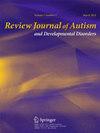求助PDF
{"title":"使用计算机辅助教学教授自闭症和/或智障人士阅读技能:系统综述","authors":"Olivia Kurzeja, Samantha Flynn, Corinna F. Grindle, Daniel Sutherland, Richard P. Hastings","doi":"10.1007/s40489-024-00465-y","DOIUrl":null,"url":null,"abstract":"<p>Reading is an essential life skill that can lead to independence. However, many individuals with autism and/or intellectual disabilities find this skill difficult to acquire. Computer-assisted instruction (CAI) is one approach that combines recommended reading elements (e.g., phonics, fluency, and comprehension) with evidence-based teaching strategies to support the development of reading skills. The first aim of this systematic review (PROSPERO: CRD42021253686) was to identify CAI reading programs and their effectiveness for individuals with autism and/or intellectual disability. A second aim was to evaluate the views and experiences of those with autism and/or intellectual disability, their teachers, and other stakeholders about CAI reading programs. Electronic searches of 7 databases identified a total of 3539 records for review, with 262 full-text articles evaluated, and 47 papers included in the review for data extraction and quality appraisal. The review identified both single-component and multicomponent CAI reading programs that were commercially available interventions (e.g., Headsprout<sup>©</sup>, ABRACADABRA) and bespoke interventions (e.g., personalized e-books). Thirty-four of the 47 studies reported positive outcomes in terms of effectiveness. However, the quality of these studies was often poor, and the description of the interventions was often limited (e.g., rationale for the intervention, who delivered it and how), leading to concerns about the rigor of the evidence base. Stakeholders’ views and experiences were reported in half of the evaluated studies. CAI reading programs were reported as enjoyable and easy to use. They were considered effective by the stakeholders. Further research is needed to develop and explore the effectiveness of CAI reading interventions using rigorous study designs, so that individuals with autism and/or intellectual disability can be provided with access to a wider range of evidence-based reading programs.</p>","PeriodicalId":46647,"journal":{"name":"Review Journal of Autism and Developmental Disorders","volume":"27 1","pages":""},"PeriodicalIF":2.9000,"publicationDate":"2024-05-31","publicationTypes":"Journal Article","fieldsOfStudy":null,"isOpenAccess":false,"openAccessPdf":"","citationCount":"0","resultStr":"{\"title\":\"Teaching Reading Skills to Individuals with Autism and/or Intellectual Disabilities Using Computer-Assisted Instruction: a Systematic Review\",\"authors\":\"Olivia Kurzeja, Samantha Flynn, Corinna F. Grindle, Daniel Sutherland, Richard P. Hastings\",\"doi\":\"10.1007/s40489-024-00465-y\",\"DOIUrl\":null,\"url\":null,\"abstract\":\"<p>Reading is an essential life skill that can lead to independence. However, many individuals with autism and/or intellectual disabilities find this skill difficult to acquire. Computer-assisted instruction (CAI) is one approach that combines recommended reading elements (e.g., phonics, fluency, and comprehension) with evidence-based teaching strategies to support the development of reading skills. The first aim of this systematic review (PROSPERO: CRD42021253686) was to identify CAI reading programs and their effectiveness for individuals with autism and/or intellectual disability. A second aim was to evaluate the views and experiences of those with autism and/or intellectual disability, their teachers, and other stakeholders about CAI reading programs. Electronic searches of 7 databases identified a total of 3539 records for review, with 262 full-text articles evaluated, and 47 papers included in the review for data extraction and quality appraisal. The review identified both single-component and multicomponent CAI reading programs that were commercially available interventions (e.g., Headsprout<sup>©</sup>, ABRACADABRA) and bespoke interventions (e.g., personalized e-books). Thirty-four of the 47 studies reported positive outcomes in terms of effectiveness. However, the quality of these studies was often poor, and the description of the interventions was often limited (e.g., rationale for the intervention, who delivered it and how), leading to concerns about the rigor of the evidence base. Stakeholders’ views and experiences were reported in half of the evaluated studies. CAI reading programs were reported as enjoyable and easy to use. They were considered effective by the stakeholders. Further research is needed to develop and explore the effectiveness of CAI reading interventions using rigorous study designs, so that individuals with autism and/or intellectual disability can be provided with access to a wider range of evidence-based reading programs.</p>\",\"PeriodicalId\":46647,\"journal\":{\"name\":\"Review Journal of Autism and Developmental Disorders\",\"volume\":\"27 1\",\"pages\":\"\"},\"PeriodicalIF\":2.9000,\"publicationDate\":\"2024-05-31\",\"publicationTypes\":\"Journal Article\",\"fieldsOfStudy\":null,\"isOpenAccess\":false,\"openAccessPdf\":\"\",\"citationCount\":\"0\",\"resultStr\":null,\"platform\":\"Semanticscholar\",\"paperid\":null,\"PeriodicalName\":\"Review Journal of Autism and Developmental Disorders\",\"FirstCategoryId\":\"102\",\"ListUrlMain\":\"https://doi.org/10.1007/s40489-024-00465-y\",\"RegionNum\":3,\"RegionCategory\":\"心理学\",\"ArticlePicture\":[],\"TitleCN\":null,\"AbstractTextCN\":null,\"PMCID\":null,\"EPubDate\":\"\",\"PubModel\":\"\",\"JCR\":\"Q2\",\"JCRName\":\"PSYCHOLOGY, DEVELOPMENTAL\",\"Score\":null,\"Total\":0}","platform":"Semanticscholar","paperid":null,"PeriodicalName":"Review Journal of Autism and Developmental Disorders","FirstCategoryId":"102","ListUrlMain":"https://doi.org/10.1007/s40489-024-00465-y","RegionNum":3,"RegionCategory":"心理学","ArticlePicture":[],"TitleCN":null,"AbstractTextCN":null,"PMCID":null,"EPubDate":"","PubModel":"","JCR":"Q2","JCRName":"PSYCHOLOGY, DEVELOPMENTAL","Score":null,"Total":0}
引用次数: 0
引用
批量引用



